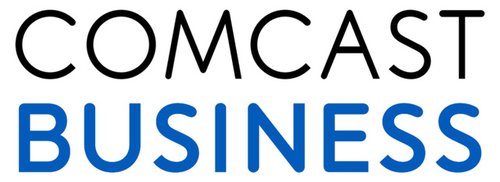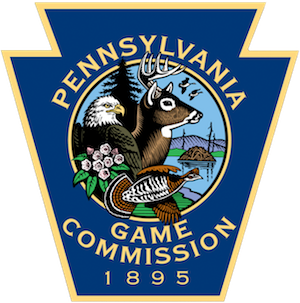Hanover Bald Eagle Blog # 7 - 2022
In partnership with Pennsylvania Game Commission and Comcast Business .
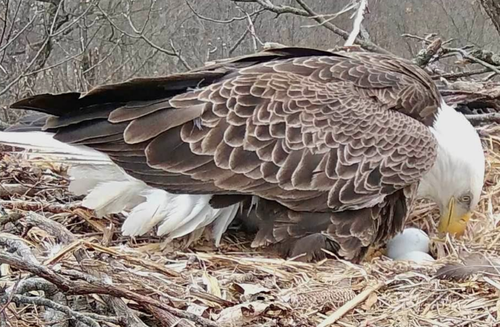
On February 15th at 6:30 pm EST, the second Hanover egg was laid! A clutch size of two eggs is typical for bald eagles, and at this point, we can safely assume the family is complete for this season. Already, both embryos have a beating heart.
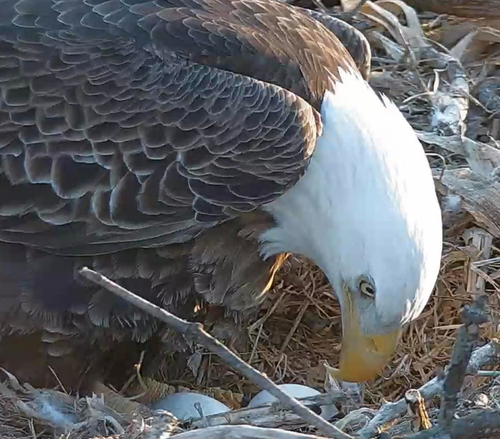
TODAY’S BLOG WAS WRITTEN IN RESPONSE TO ONE OF YOUR QUESTIONS FOLLOWING BLOG #5. THANKS FOR ASKING!
THE QUESTION WAS:
WHERE DOES THE CURRENT POPULATION [OF BALD EAGLES] STAND IN COMPARISON TO THE YEARS PRIOR TO THEIR NEAR DEMISE?
The current population size of bald eagles in the lower 48 is thought to be smaller than what existed prior to European settlement, but nearly the same as what existed prior to the DDT era.
These kinds of numerical comparisons are made possible because naturalists, landowners, and others wrote down their observations of wildlife species, including bald eagles. However, even before written observations became commonplace, people noticed eagles. Indienous peoples from across the species’ range included eagles in song, dance, and story. Early landscape paintings of the West featured large birds with white heads and tails, scribing circles into the sky. They are powerful animals with a long history of invoking inspiration across landscapes, time periods, and various fields of study.
Some of the earliest written observations of bald eagle numbers are available to the public. This is thanks to the hard work of researchers like James P. Mattsson, a member of the Northern States bald eagle recovery team formed in 1973, along with five other teams, as part of a protocol outlined within the Endangered Species Act. One of their tasks was to compile historical records (prior to 1960) of bald eagles within their region.
Mattsson wrote this report, which details observations of bald eagles in 25 northern states, including Pennsylvania, from 1600 onward. Mattsson has his work cut out for him — he looked at 550 individual records from 238 different kinds of resources, including:
- State and national journals
- University periodicals
- Academic papers
- Agricultural and geological survey bulletins
- Popular magazines
- Graduate theses
- Museum records
- Miscellaneous papers
- Individuals
From these resources, he gathered accounts related to:
- Nesting
- Winter observations
- Mortality (deaths)
- Collected specimens
Talk about hard work!
I encourage you to check out this fascinating report. Observations made within Pennsylvania begin on page 47, and are specific to county. They include reports of clutch size for specific nests, behavioral observations, and reflections on population changes over time. Some entries describe a person’s reasons for shooting an eagle (like carrying a lamb away in Chester County!).
This report offers just one example of how conservationists go about collecting historical information regarding the population status of a species over time. The information from Mattsson’s report has been used to contextualize how bald eagles have fared over time, offering insight into the long-term effects of widespread habitat loss, DDT, and shooting.
Cornell’s Lab of Ornithology cites Mattsson’s report when they say that prior to European settlement, bald eagles probably nested “in all of continental U.S. except possibly Rhode Island, W. Virginia, and Vermont.” In the late 1800s, the Chesapeake Bay area boasted an especially large population, estimated at up to 8,000 pairs. That number had dwindled to 600 pairs by the 1930s, and 79 pairs by 1965.
Today, there are an estimated 3,000 pairs breeding in the Chesapeake Bay area alone!
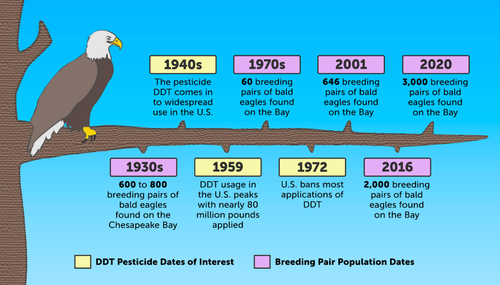
Image: Chesapeake Bay Program.
True, bald eagles have made an astonishing comeback. Their numbers are soaring and their chicks are fledging. However, a look at our collective environmental history shows us that humans too easily let their guard down and return to harmful habits that undermine the health of beloved species like the bald eagle. There are things we can all do to support the birds we love:
How you can support bald eagles:
- Spread the word that bald eagles, and other raptors, deserve our respect and play an important role in keeping their surrounding habitat healthy.
- Consider using non-toxic pesticides and/or chemical-free cleaning products. The toxins we use in our homes end up in waterways, impacting entire aquatic food webs, of which bald eagles are a part. Along these lines, consider safely disposing of paint, motor oil, and pharmaceuticals, so that these substances stay out of creeks, ponds, lakes, and rivers.
- Contribute to the PA Game Commission’s efforts at monitoring bald eagle populations in the state through their Bald Eagle Nest Survey project. You can help them count! According to the PA Game Commission, the bald eagle population in southwest Pennsylvania is particularly poised for growth in the near future.
QUIZ QUESTION: WHICH STATE HAS THE LARGEST POPULATION OF BALD EAGLES TODAY? TRY NOT TO GOOGLE! ANSWER WILL BE REVEALED NEXT WEEK.
Sources
Buehler, D. A. (2020). Bald Eagle (Haliaeetus leucocephalus), version 1.0. In Birds of the World (A. F. Poole and F. B. Gill, Editors). Cornell Lab of Ornithology, Ithaca, NY, USA. https://doi.org/10.2173/bow.baleag.01
Chesapeake Bay Program. (2022). Bald Eagles. https://www.chesapeakebay.net/state/bald_eagles#:~:text=As%20of%202020%2C%20biologists%20believe,region%20no%20longer%20occur%20annually.
Foley, Gabriel. (2020, December 24). Bird of the Month - Bald Eagle. Ebird.org. https://ebird.org/atlasmddc/news/december-2020-bird-of-the-month-bald-eagle
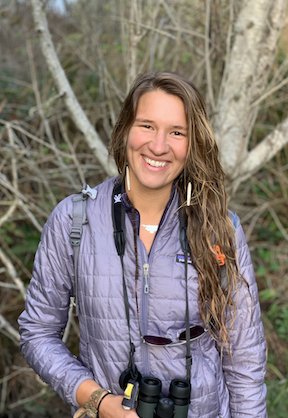
RETURN TO HANOVER BALD EAGLE BLOGS
WATCH THE HANOVER BALD EAGLE LIVE CAMS
For over 20 years, HDOnTap has provided live streaming solutions to resorts, amusement parks, wildlife refuges and more. In addition to maintaining a network of over 400 live webcams, HDOnTap specializes in design and installation of remote, off-grid and otherwise challenging live streaming solutions. Contact press@hdontap.com for all media needs, including images and recordings.
